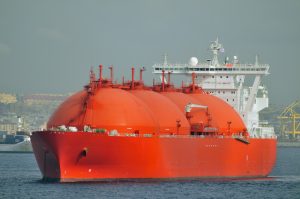A consortium of Thai, Vietnamese, and Japanese energy companies recently announced they will begin developing the Block B gas field located 330 kilometers off the coast of Vietnam, a project that has been gestating for many years but only now seems to actually be moving forward. Japanese banks are providing $832 million in financing, roughly half of which will come from the Japan Bank for International Cooperation, a state bank that frequently supports strategic overseas projects. The total value including upstream development, pipeline construction and onshore power plants will be in the billions of dollars.
JBIC is already taking heat from environmental groups who point out that Japan, historically a major source of financing for coal power in Southeast Asia, had pledged to help reduce emissions in the region. As one example, Japan is heavily involved in initiatives such as the Just Energy Transition Partnerships in Indonesia and Vietnam. $832 million dollars to finance the development of a large natural gas field could be seen as contrary to the spirit of those efforts.
Japanese banks would probably counter that the pledge was only to end financing for coal. Other fossil fuels, such as liquefied natural gas, were never part of the commitment. And, from their perspective, for good reason. The argument goes that even as Vietnam and other emerging markets pivot toward clean energy, they will still require reliable and predictable sources of electricity generation (such as natural gas or coal) in the near-term to ensure grid stability.
Burning natural gas emits less carbon than coal, so if fossil fuels must be part of the energy mix for now, gas should replace coal during the transition period while more renewable capacity is added. Unsurprisingly, big Japanese gas companies like Tokyo Gas are advocates of this approach.
And they are backing it up with sizable commitments in the region. In addition to the Block B project, which involves subsidiaries of Japanese conglomerate Mitsui, Tokyo Gas is currently developing a 1,500 MW LNG power plant in northern Vietnam, their second such project in the country. Tokyo Gas is also preparing to co-develop a liquefied natural gas terminal in the Philippines, a deal which is pending government approval.
There are a couple of reasons why Japanese firms are pushing LNG in Southeast Asia. One is that there is probably some truth to the claim that emerging markets need a less carbon-intensive but still reliable transition fuel over the medium term. Fossil fuels are not going to disappear tomorrow and much of Southeast Asia’s existing coal capacity will, for various reasons, continue operating for the next 10 or 20 years even as investment in renewables accelerates. Displacing coal with a less carbon-intensive transition fuel is one possible way to lower emissions.
Another reason is that Japan has historically been a major importer and consumer of natural gas. As a consequence, the country has a sprawling LNG ecosystem that includes large industrial and energy firms whose business activities revolve heavily around natural gas. Many of these firms are now pivoting toward Southeast Asia because the use of natural gas in Japan is declining. In the financial year ending in March 2017, Tokyo Gas had nearly 10.3 million customers. By 2023, the customer base had shrunk to 8.7 million.
As domestic demand softens, Tokyo Gas and other firms that are part of this ecosystem will need to start looking further afield for opportunities, particularly overseas in fast-growing economies with ballooning energy demand like Vietnam and the Philippines. Japanese banks will no doubt continue to underwrite expansion into Southeast Asian LNG as these projects, like Vietnam’s Block B gas field, create demand for high-value Japanese goods and services.
The transition to cleaner energy is an imperfect and ongoing process. It will probably not happen quickly or in a predictable, linear way. Natural gas, and indeed coal, are likely to stick around for longer than we would like. And given the political economy of LNG in Japan and Southeast Asia, as well as the genuine need for stable and predictable generating sources while renewables and supporting grid infrastructure mature, gas may be one of the least bad options for the near to medium term.

































